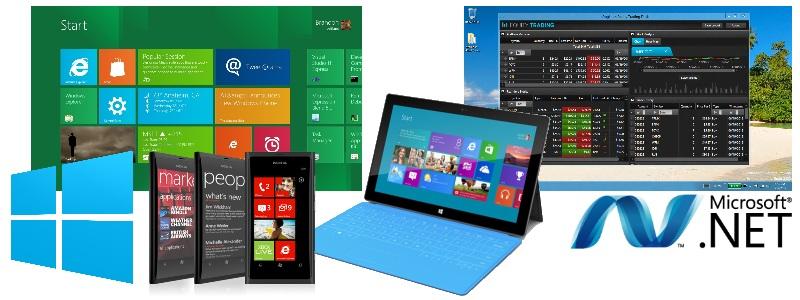
Lately it seems like some companies are working to make all of our technology unified. That is to say, between our phone, tablet, and personal computer, companies are trying to make each platform across each gadget match so they’re easier to navigate and use. Probably the best example on the market right now is what Microsoft is doing with Windows 8, Windows Phone 8, and any number of the Microsoft tablets on the market. And while there are certainly differing opinions on the subject, as somebody who uses Windows 8.1 on her computer, the Metro or Modern UI simply does not bode as well in a PC environment as it does in a phone or a tablet.
There are several reasons that I feel this way. First and foremost, the Start Screen is simply not as easy as it looks. Not for people who have been using Windows for long periods of time, that is, and as a young adult myself who has been through 7 or 8 different versions of Windows on the PC, Windows 8 is the most bizarre interface of them all. There are some good things about it, but simply put the large tiled interface of the Start screen really doesn’t make any sense for a PC once you think about it.
Live Tiles work well in tablets because phones and tablets rely mostly on a user’s fingers to navigate - fingers which can often times be larger or clumsy against a smaller screen. With most PCs, you’re going to be using a mouse - a tiny pointing cursor, which can deal with the traditionally small icons that accompany PC software. Even with a touchscreen monitor, most of the time I’m using a mouse, simply because it’s not all that comfortable to extend my arm out to the monitor to click on something. When people buy a Windows 8 PC, I am willing to bet that the majority of them are looking for a traditional PC experience, and not a tablet-optimized UI hanging out inside of a PC shell.
This unification across all systems might sound a neat and organized idea in theory, but in reality, it’s just a confusing mess.
We used to use computers a lot, and lately we split our time between our smartphone and our computers because a lot of the stuff you used to do on your computer can be done more conveniently do straight from your smartphone. That’s understandable, it happens. But personally, I never had a problem with my PC looking and working a little differently from my smartphone or tablet. They are different products, and they have different uses.
I keep seeing reports that the PC is dying, but there are some things that I’m fairly certain will never be as precisely done on a smartphone as it can be on a computer - at least when it comes to smartphones in their current state. There is no full version of Photoshop or other Adobe programs on smartphones; games are getting better, but are seriously lacking some control and battery issues (and I don’t see any more Xperia Play phones coming out soon); and of course, just straight up creating documents and presentations, while they can be done on smartphones, end up having a lot more options when doing so straight from a computer. There are plenty more reasons, but the bottom line is, PCs are not dying right now.
Think of it this way: I have an oven and a microwave in my kitchen. They both essentially do the same thing, but guess what? I use both. The microwave cooks food faster, the oven cooks food better. My smartphone is the microwave, my PC is the oven. It might be older, but it’s still a useful tool to have around. That being said, just because they are essentially the same thing (they heat things up and cook food) they both end up with different results. The microwave food usually comes out a little soggier, but it was done about 3 hours faster than a tender, crispy result from the oven. They’re both fully cooked, but one result may be more desirable than the other at different times. I might be in a hurry and need a smartphone, or I might need a more detailed program, so I use the PC.
Unification might look prettier, but it doesn’t act prettier. Maybe we can just take a step back and recognize them for the devices they are, hmm?
Image via Apple Insider